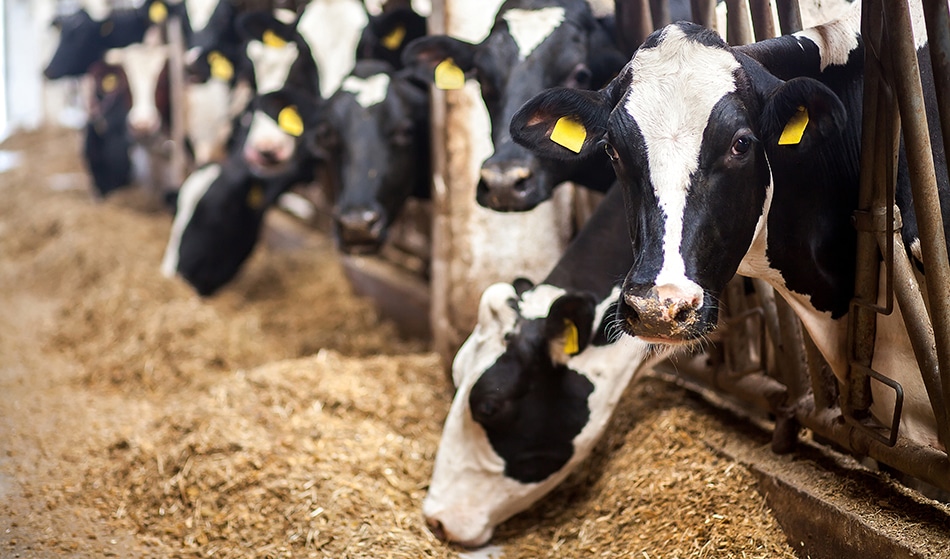FDA Mycotoxin-Producing Fungi Testing in Feed
Ensuring feed safety is critical to maintaining animal health and productivity, as well as protecting public health. Mycotoxins produced by certain fungi can contaminate agricultural products such as corn, soybeans, and wheat used in animal feeds. These toxins are potent carcinogens and mutagens that pose significant risks if ingested by livestock or humans consuming meat derived from these animals. Regulatory bodies like the U.S. Food and Drug Administration (FDA) have established maximum allowable limits for various mycotoxins to safeguard against such health hazards.
The FDA Mycotoxin-Producing Fungi Testing in Feed service is designed specifically to identify and quantify potentially harmful fungi responsible for producing these toxins, ensuring compliance with regulatory standards. This testing helps quality managers, compliance officers, R&D engineers, and procurement teams make informed decisions about feed safety and supply chain integrity.
The methodology involves a series of steps starting from sample collection through final analysis. Samples are typically collected directly from the feed production facility or supplier sites where contamination risks are highest. Once collected, samples undergo rigorous preparation processes including cleaning, grinding, and sieving to ensure representative subsampling for testing.
Instrumentation plays a crucial role in this process; advanced analytical techniques such as High Performance Liquid Chromatography (HPLC) with Photodiode Array Detection (PDAD), Gas Chromatography-Mass Spectrometry (GC-MS), and Enzyme Linked Immunosorbent Assay (ELISA) are employed to detect minute quantities of mycotoxins. These methods provide precise quantification levels necessary for meeting regulatory requirements.
Accurate identification of fungi capable of producing mycotoxins is also essential; this involves culturing samples under controlled conditions and identifying specific fungal strains known to cause contamination issues according to recognized standards like ISO 21576:2019 and AOAC Official Method 994.08.
Results from these tests are crucial for decision-makers in the agricultural sector who need reliable data on feed safety. Compliance officers rely on this information to ensure adherence to legal limits set by authorities such as FDA, while R&D engineers use it to develop safer feeds or improve existing formulations. For procurement teams, accurate testing ensures they source safe raw materials for processing into animal feeds.
By providing comprehensive analysis of feed samples, our service helps stakeholders mitigate risks associated with mycotoxin contamination and maintain regulatory compliance. This not only protects the health of animals but also supports ethical practices in food production that contribute positively to global food security.
Scope and Methodology
| Step | Description |
|---|---|
| Sample Collection | Samples are taken directly from feed production facilities or suppliers to ensure they represent the full batch. |
| Preparation | The sample undergoes cleaning, grinding, and sieving to prepare it for testing. |
| Culturing | Fungi present in the sample are cultured under controlled conditions to identify specific strains. |
| Analysis | Analytical techniques such as HPLC-PDAD, GC-MS, and ELISA are used to detect mycotoxins and quantify their presence. |
Why Choose This Test
The FDA Mycotoxin-Producing Fungi Testing in Feed service offers several advantages that set it apart from other testing options available:
- Comprehensive analysis covering all relevant mycotoxins and fungi.
- Use of cutting-edge technology ensuring accurate results every time.
- Prompt turnaround times allowing for timely intervention if necessary.
- Detailed reporting tailored to meet specific client needs.
- Expert interpretation of findings provided by experienced laboratory staff.
Competitive Advantage and Market Impact
- Pioneers in using advanced analytical techniques for mycotoxin detection.
- Offers faster turnaround times compared to industry competitors.
- Provides detailed reports backed by expert interpretation enhancing decision-making capabilities of clients.
- Comprehensive service covering all aspects of feed safety ensuring full compliance with regulatory requirements.





